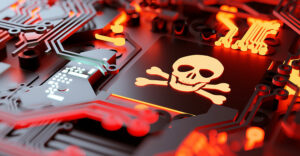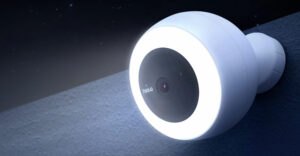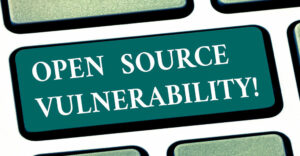
Windows Vista is the biggest release for Microsoft since Windows 95. With that release, Apple was tested — and they failed miserably. I was at Dataquest at the time and not only did I warn Apple to take 95 more seriously, I also accurately forecast the massive decline that would happen to them if they didn’t do just that.
This was in 1994, after Steve Jobs had been fired from Apple. Of course, he is back now. Apple is again growing with the market and, unlike 1994, is dominant in an emerging market — digital music players.
However, Microsoft has changed as well. Having made vast improvements in terms of security and quality the company has benefited from a solid influx of customers formerly tied to their competitors and partners to become both more capable (good) and more complex (bad). They are still light on marketing talent and here the need for capable outside talent remains very pronounced. This is clearly not a weakness shared by Apple.
The MS platform has changed dramatically as well, however, and it is much greater than just the operating system these days. Apple, on the other hand, hasn’t advanced nearly as much but they are predominantly consumer-based today and less vulnerable to this comparative weakness as a result. Apple will be positioning its Intel-compatible OS version against Vista and they have about 12 months to prepare for the threat. Just like the last time, they will largely leverage hardware this time, and, as before, they will be up against companies with resources that eclipse their own.
Windows Vista and Office 12: Power on the Desktop
It will be the combination of Microsoft’s two products, Vista and Office 12, that will carry the competitive load. Both products have undergone massive change and that has been the main purpose of this latest Professional Developer’s Conference: to bring the developer community up to date.
There are a couple of things that stand out that could change the way we do things. The first is the auxiliary display called Side Show. This is a small PDA-like display on the cover of notebook computers that provides access to PDA-like functions without powering on your laptop. For instance if you want to check an e-mail for directions, or your calendar, or contacts, you can bring them up instantly without having to wait for your system to boot.
Glass is the user interface enhancement that appears to improve on what Apple currently has with Tiger. Granted, Tiger is shipping and Vista isn’t, which gives Apple time to respond. Still, this is the closest to Apple’s capability we have ever seen from Microsoft and for those of us who simply cannot use Apple machines this will be very well received.
Instant On has been promised for years and this product provides a huge advancement when loaded on appropriate hardware. While this feature remains largely in stealth mode awaiting availability of compliant hardware, this provides a massive improvement in boot times and, when coupled with PreFetch, described below, a sharp improvement in perceived performance. This, coupled with the knowledge of the security improvements that won’t work on currently shipping hardware, leads to a strong suggestion that folks moving to Vista might want to do so with new hardware.
PreFetch is a new technology that will look for applications you frequently use and preload them so they pop when selected. This will be a memory hog and make you really glad memory is inexpensive. Two GB of memory should result in a machine that loads applications in a fraction of the time they would typically take to load. One cool thing is you can use a USB memory stick to increase your dynamic memory. Many of us figure that if you know enough to do this you likely know how to increase your system memory and that remains the better path, but this was kind of cool in a geeky way.
IE improvements are broad and easily eclipse those by Firefox and Netscape, but remember this is still beta code so these competitors do have time to respond. Web applications are now more effectively sand-boxed so they can’t do damage and IE extends tabs to include full preview windows. In addition, there has been a massive improvement in resistance to phishing which leads me to favor the Netscape browser for individuals. The new IE expands on the idea of tabs to provide real time views of the active pages.
For Office 12 the clear advancement is discoverability. The product has over 1,500 features and most of us use 30 or 40. The massive UI enhancement has to do with being able to find and understand these features, the vast majority of which have been included in earlier versions of the product. This is something where the words “long overdue” seem incredibly inadequate. Everything else, no matter how compelling, that is new in this product simply seems unimportant when compared to this one comprehensive overdue enhancement.
The Power of the Back End
The real power in this platform has always been tied to the support of the developer community. When they get excited about changes the platform’s potential is better realized. When they don’t the market simply doesn’t move. The developers at this year’s PDC seemed more excited than I have seen in years and that bodes well for the success of this platform. However, unlike in 1995 when it was all about the desktop, and 2000 when .NET was only a future concept, this generation is backed up by a relatively mature and complete back end.
Much of what has been demonstrated so far suggests massive advancements for vertical applications like CRM and horizontal applications like enhanced peer-to-peer wireless collaboration tools. This finally suggests the emergence of the Uber-Platform that was envisioned five years ago.
For some time it really has been about the Web and there has been a clear separation between the client and server capabilities that limited what we could do. At this PDC they have showcased a much higher level of integration between the concepts into something that is much less client/server and much more like an integrated platform that more effectively, and often dynamically, blends the concepts from both platforms. This is something that neither Apple nor Linux proponents can yet fully address (even IBM who is the only real challenger here seems well behind because they remain server-centric).
The most powerful visual tools are Acrylic, Sparkle, and Quartz which dramatically improves the Web-based visual toolset available and probably goes further to explain why Adobe felt the need to acquire Macromedia than anything else I can think of. This promises richer Web sites and future multi-media hosted applications that can better exemplify products and services and create a more immersive experience.
Apple vs. Microsoft: Die Another Day
In 1995 Apple was nearly shut down by a product that wasn’t as visually exciting as Apple’s on hardware that was a pale image of what Apple had on the market. But Windows 95 had more application support and where it lagged Apple the vast majority of buyers found it to be good enough. For this round Vista in many ways is equal to or better than Tiger or more advanced, relatively speaking, than Windows 95 was during its beta period.
As for hardware, unlike 1995, the hardware OEMs not only cover a broader range with companies like Voodoo and Alienware in the mix, but historically staid companies like Gateway, HP, Acer, and even Dell are much more aggressive on design today, often surpassing Apple, which was preeminent in this area in the 90s. While this design parity clearly hasn’t impacted the iPod market yet it is incredibly evident in the PC space.
Apple will have to improve its game sharply to compete. However, given the strength at the back end, strength that Apple has never had, the exposure now goes well beyond Apple’s available resources. This means Apple will have to partner to avoid what may be the most damaging competitive threat the company has ever faced. While possible, Apple’s one prevailing weakness has been their inability to partner and unless that changes we should be able to call the outcome of this competition relatively easily — and it isn’t positive for Apple.
Linux vs. Microsoft
Linux and Microsoft make for a more interesting match up: developer against developer from a resource and tool standpoint. Microsoft appears to have the edge, but from a support standpoint the groups are more evenly matched. However, Linux isn’t yet viable on the desktop and this is a blended attack suggesting that, over time, Microsoft should prevail unless Linux, through the combined efforts of all if its supporters, can address this desktop shortcoming. The fact that some of the most powerful Linux supporters also support Microsoft will make this a rather interesting dance to watch.
Strangely enough Linux and Apple together could probably address this threat effectively but the two groups are at opposite extremes. Such a partnership is not only unlikely but virtually impossible.
While Vista is unlikely to displace massive amounts of in-place Linux platforms it should reduce Linux growth measurably (Linux should still be favored for most Unix migrations). Were Microsoft to come out with a platform that was more similar to Unix that also integrated with .NET and used enhanced Microsoft development tools this slowed growth could advance into competitive displacement. There is, however, no indication yet that Microsoft is planning such a platform. But the opportunity can’t be lost on many. A future offering could address this competitive Microsoft weakness.
Conclusion
Going back to Windows 95, the problems with that product had to do with the immaturity of tools at that time, a horrible post-launch marketing effort, and support decisions that were so bad they were legendary. Even so, it nearly put Apple out of business. While it is too early to judge the marketing effort (and if the Office 2003 program case is any indication there’s a chance Microsoft could screw this up again) but the product, tools, and back-end integration is light years ahead of where they were in ’95, both absolutely and relatively.
The Linux community is under substantially less threat because Vista simply doesn’t yet embrace what makes Linux compelling, but it should slow Linux growth. If the reaction of the PDC developers is any measure, this will be bigger than Windows 95 was, and if Apple and the Linux community can’t make the hard decisions needed to address this competitive threat the negative impact on both of them will cover a broad range and will be unavoidable.
That said, Microsoft has certainly stumbled in the past and could still stumble here. While there is no indication of that happening, other than the obvious delay of this product, now just as there are opportunities for success, also embedded in this effort are massive opportunities for failure.
The net is that users will like the changes they see that the developers are already excited about. Most users don’t use Linux and the market moved from Apple PCs years ago. Better reliability, security, and a more appliance-like experience are all good things and we can only imagine what might have been had Microsoft not delayed this product two years. As always, and particularly in this case, the best experience for users of this new OS will be had on new hardware which is becoming both more attractive and less expensive year after year.
This suggests that 2006, at least after August, will be great time for buyers and sellers of PC hardware and that has to be a good thing for everyone — except Apple.
Rob Enderle, a TechNewsWorld columnist, is the Principal Analyst for the Enderle Group, a consultancy that focuses on personal technology products and trends.






















































"Apple, on the other hand, hasn’t advanced nearly as much.."
The fact that windows users are still working with an operating system that was developed 5 years ago, and is the most vulnerable operating system out there for the average user (ie. soccer mom) shows no advance in terms of the OS at all. The fact that the author made Microsoft such a clear cut winner is beyond me. Apple currently is the most innovative technology company around today. Supplying the most advanced and stable OS around. I have used Windows since I was a kid, and have gone through almost every Linux distro around, and it wasn’t until I switched to Apple that I never second guessed the hardware and software that my applications run on.